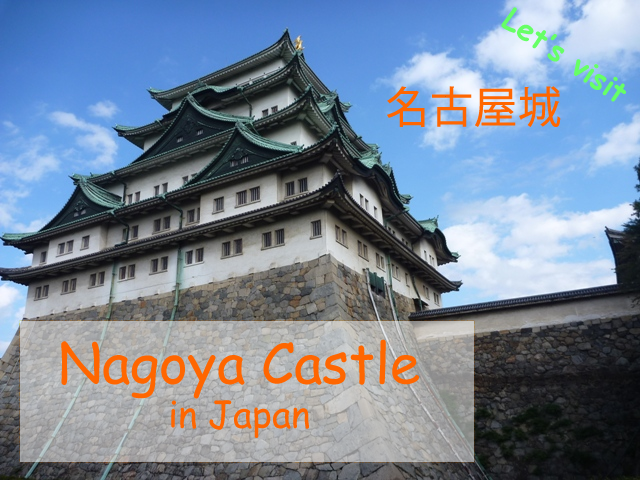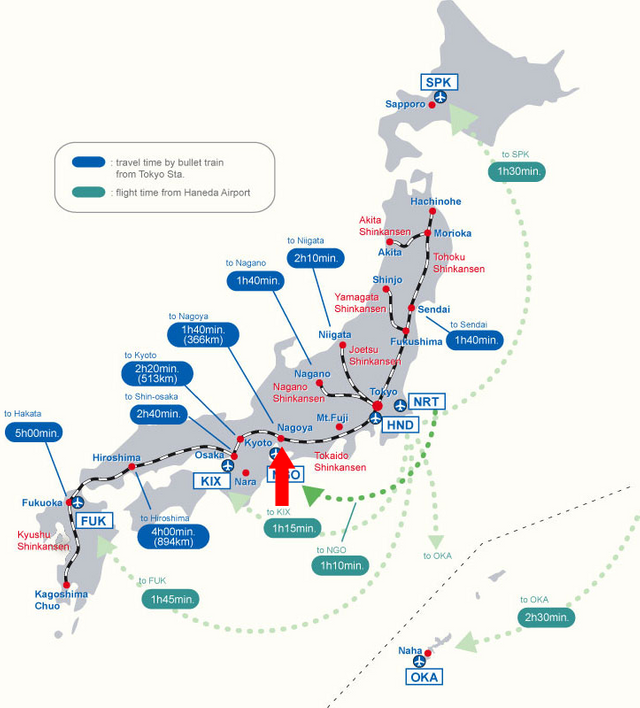Nagoya Castle in Japan - 名古屋城

I was looking forward to seeing Nagoya Castle's Kinshachi. They were the top of Castle and looked very shiny beautiful. (Well, they were also displayed in the Castle.)
Kinshachi:
Shachi are imaginably animals that are said to be able to summon water and have come to be used as charms for preventing fire. The Kinshachi on top of Nagoya Castle show the power and money the Tokugawa family had. The gold on the statues is said to be the same as 1940 keicho era gold oban (large coins).
Hommaru Screen Paintings:
Chrysanthemum dolls:
A doll figure clothed in bunches of chrysanthemum flowers and leaves and representing famous character in folklore.
When I was a little, I was scared to see them. Haha..
My grandmother was growing a lot of big chrysanthemum in her house. They remind me my grandmother. She always took care them well. I can still smell the flowers.
Special Exhibits:
Bonsai with Chrysanthemum.
Those tiny chrysanthemums and trees are living together.
It looks growing on a mountain. Beautiful work.
Getting into Nagoya Castle!!
History
Tokugawa Ieyasu, who had been victorious at the Battle of Sekigahara, decided to build Nagoya Castle. He also moved from Kiyosu to the new castle town. The grid pattern of the new town became the model for modern Nagoya.
In 1610, Tokugawa Ieyasu ordered the construction of Nagoya Castle. The castle was mostly finished by 1612.
Even after the Meuji Restoration (1868), Nagoya Castle was beautiful and was used temporarily as a place for the Emperor. It became the first castle to be designated as national treasure in 1930. However, in 1945 during WWII, the main castle tower and Hommaru Palace were destroyed. The people of Nagoya asked for the main castle tower, the symbol of Nagoya, to be built again. At last, it was rebuild in 1959.
7F - Observation Room
Nagoya city view. It was very nice to see all sides of the city.
Abundant materials related to Hommaru Palace have survived, including documents, old photographs, survey maps and screen paintings. There records have made histrically faithful restration possible, so restration on the palace started in 2009. The palace is going to open to public in 2018!!
Hommaru Palace - Representing Social Atatus:
The place where the load sits is distinguished from other room by setting the special decorations and higher floor. Visitors can recongnize easily who used the room at a glance. Ceiling also have different features depending on the rooms.
Here is Nagoya!!

Love visiting historical places. :)
Thank YOU .. for the t'OUR - ))
This post .. is a 'fun' trip - ))
.. i can't help but see, the past 'alive' .. a different time, when all the glass covered 'artifacts' .. are the daily "go to" tools and clothes. SOME-how .. the longevity of craftsmanship .. sings .. in many of these pictures .. a beautiful tune, about the way forward .. and a bit 'haunting' too .. in the sense .. i don't want to be "preserved" in the future .. even if i get covered in fresh Chrysanthemum's .. ha ha - ))
What a strange balance .. 'now' - ))
Live too much in the past .. and we feel that history repeats itself (too much respect ) ... ... Live too much in the future .. and we feel the past was worthless and boring (too little respect) ??
Hmm ??
.. i wonder 'how much' .. NOW .. i'm 'missing' ??
.. how much closer i could get to the edge ??
.. the k_NOW-L'edge - ))
.. thank'S YOU ! - ))
GreaT PosT - ))
lovelovelove )))
greb'Z )
PumpeD & reSTEEMed - ))
Hi! I am a robot. I just upvoted you! I found similar content that readers might be interested in:
https://en.wikipedia.org/wiki/Nagoya_Castle
#sharebits 1 BTS @tsugimoto